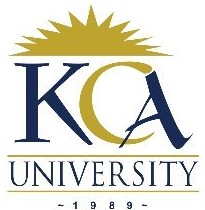
UNIVERSITY EXAMINATIONS: 2016/2017
EXAMINATION FOR THE DIPLOMA IN BUSINESS INFORMATION
TECHNOLOGY
DBIT507 BUSINESS INFORMATION STRATEGY
DATE: AUGUST, 2017 TIME: 2 HOURS
INSTRUCTIONS: Answer question ONE and any other TWO questions.
QUESTION ONE (30 MARKS) – COMPULSORY
a) Explain how the following disciplines have been used in business information strategy.
(5 Marks)
i. Computer science
ii. Management science
iii. Psychology
iv. Commerce
v. Computer engineering
b) From a business perspective decisions concerning a company’s strategy define the
revenue drivers of the business and its potential for growth over time. Explain the four
dimensions that define strategic positioning according to Michael Porter. (4 Marks)
c) Explain the following components of the business model audit. (4 Marks)
i. Assessing the business context
ii. Analyzing customers
iii. Analyzing competitors and substitute products
iv. Assessing the business network.
d) Explain the following types of information systems used in different levels of the
organization.
(8 Marks)
i. Management information systems
ii. Strategic information systems
iii. Knowledge base information systems
iv. Transaction processing systems
e) Anyone managing a company’s processing systems need to make decisions about the
technological elements that comprise the processing systems. Explain these elements
under the following: (6 Marks)
i. Client devices and systems
ii. Server devices and systems
iii. Mainframe devices and systems
iv. Middleware
v. Infrastructure management systems
vi. Business applications
f) Improved connections between departments, companies and customers mean quicker
realization of economic values when parties interact but is also faced by various
drawbacks. Outline any three. (3 Marks)
QUESTION TWO (20 MARKS)
a) With real-time internetworking infrastructures, customers are serviced and economic
value is realized immediately rather than over hours, days or even weeks. Explain FIVE
benefits and FIVE drawbacks of these infrastructures. (10 Marks)
b) Business applications can be provided internally by IT departments or can be out sourced
from Application Service Providers. Outline FIVE disadvantages of outsourcing.
(5 Marks)
c) Define the following terms. (5 Marks)
i. Business
ii. Business vision
iii. Business mission
iv. Information system
v. Strategy
QUESTION THREE (20 MARKS)
a) Briefly explain the three major categories of E-commerce giving a n example of each
category. (6 Marks)
b) Outline the strategic benefits an organization may gain in automation of its office
activities.
(5 Marks)
c) Shop Smart is a supermarket chain that recently adopted the internet as a platform for
doing business which presents new opportunities for both business and their customers.
Explain FIVE benefits that customers might get while using web based systems.
(5 Marks)
d) Explain FOUR components of an information system. (4 Marks)
QUESTION FOUR (20 MARKS)
a) Explain the following concepts as organizational change due to information technology.
i. Automation. (3 marks)
ii. Rationalization. (3 marks)
iii. Business process re-engineering. (3 marks)
iv. Paradigm shift. (3 marks)
b) Explain FIVE types of threats that computer networks face. (5 marks)
c) Outline ways a company can counter any of THREE threats in B above. (3 marks)
QUESTION FIVE (20 MARKS)
a) Facilities management has become an important aspect of infrastructure management due
to demands for always 24-7 operations. Most managers are faced with decisions about the
design management of the components of IT infrastructure. Explain the components of
the IT facilities management. (10 Marks)
i. Building and physical spaces
ii. Network conduits and connections
iii. Power
iv. Environmental control
v. Security
b) Explain the THREE components of a MISSION statement according to Bart.
(3 Marks)
c) Explain TWO advantages of outsourcing (2 Marks)
d) Explain advantages a company would enjoy by automating its activities. (5 Marks)
